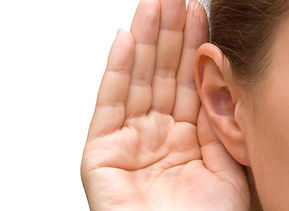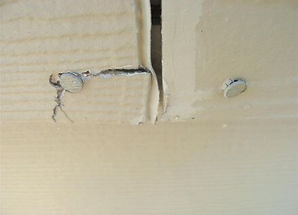Noise

Keep an ear out for loose siding during wind
Yes, noise can be an issue. Because siding does not have a tight seal, wind may create noise as siding pieces move. A way to differentiate general noise from the noise amplified by your siding is to keep an ear out for clatters and squeaks during heavy wind as any loose siding pieces may move as wind blows against the building.
Common Issues | Siding
Need an Estimate? Contact Us
Please feel free to ask any questions about our suppliers, products, or estimates.
Improper Installation

Angled and improper nails on fiber cement siding
When it comes to vinyl, special flashing trim pieces around the edges of siding and doors and windows can be vulnerable to leaks if not installed properly. In fiber cement siding, the way in which installers nail cement boards can negatively impact fiber cement siding. Overdriven nails, angled nails, or even using the wrong nails, can lead to cracks which will ultimately result in premature damage and deterioration.
The walls surrounding you will usually have some form of siding, and though there are various color coatings, siding textures, or sizes -- there are common issues that most siding is associated with. Though some of the common siding issues can be avoided through proper installation, weather and age is another factor to take into consideration. Below are some common problems and tips to be on the lookout for siding, so that you know when to call in a professional for siding repair or replacement.
In vinyl siding for example, warping is a common issue if not installed properly. Vinyl siding must be hung from fasteners because over time vinyl siding will expand and contract with temperature variations and there needs to be sufficient room to allow this type of movement. Moreover, severe cold weather can cause vinyl siding to become more brittle and susceptible to cracking.
Warping

Warping in vinyl siding
Some siding variations lack waterproof barriers. Moisture from outside elements can penetrate beneath siding which can result in mold and algae growth. You can differentiate mold and algae by color. Algae will have black, brown or green discoloration over surfaces that stay moist and damp. Mold on siding is typically a white or gray color with small specks of black.

Mold and algae
Small gray/black spots are indicators of mold





